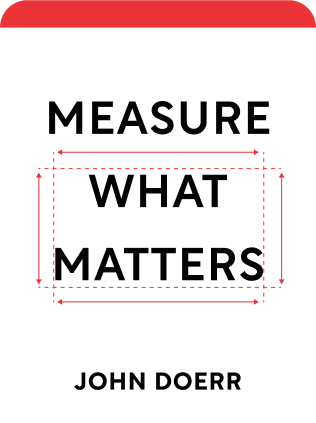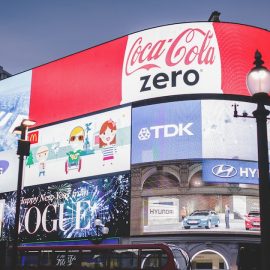

This article is an excerpt from the Shortform summary of "Measure What Matters" by John Doerr. Shortform has the world's best summaries of books you should be reading.
Like this article? Sign up for a free trial here .
What are good OKR examples? Can OKR examples help you develop amazing OKRs?
Good OKR examples are designed with objectives and goals that are measurable, adjustable, and focused. You can use examples of OKRs as a way to see which OKRs work and why.
Read these good OKR examples for info on what makes a good OKR, and some companies that did them correctly.
Good OKR Examples: How They Work
After you know your priorities, your objectives, you can start to plan how to achieve them. Key results are the steps that get you there. For each objective, decide on three to five key results—sub-goals that are specific, measurable, and time-bound, and that collectively ensure you’ll attain your objective. Reading this list of best OKR examples can help.
The three sets of key results (KRs) below are all proposed paths toward the objective of winning the Indy 500. What differentiates the strong key results from the weak and so-so key results? Think about this when reading these great OKR exmaples.
| Weak KRs | So-So KRs | Strong KRs |
| Objective: Win the Indy 500.KR #1: Achieve a faster lap speed.KR #2: Decrease time during pit stops. | Objective: Win the Indy 500.KR #1: Achieve a lap speed that’s 2% faster.KR #2: Decrease time during pit stops by an average of 1 second/stop. | Objective: Win the Indy 500.KR #1: Achieve a lap speed that’s 2% faster.KR #2: Decrease time during pit stops by an average of 1 second/stop.KR #3: Decrease pit stop errors by half.KR #4: Spend 1 hour/day practicing pit stops. |
The Problem with the Weak KRs: These key results are measurable, but they aren’t specific. How much faster does your lap speed need to be to win the Indy 500? By how much time do you need to decrease pit-stop length?
The Problem with the So-So KRs: These key results are better because they’re measurable and specific. In the beginning, many of your KRs will look like these, and that’s fine. But there’s still a problem. Achieving a faster lap speed is relatively straightforward, but how do you decrease your pit-stop time? The strongest KRs answer how.
Quantity and Quality OKRs
These good OKR examples can help you create your own OKRs. Pair “quantity OKRs” (make ten sales calls) with “quality OKRs” (earn two new orders). This ensures that you don’t sacrifice the quality of your product or service in the name of meeting your ambitious quantitative goals.
| Quantity Objective | Quality Objective | Result |
| Process 10x more vouchers this quarter | Make 10% fewer errors in voucher processing | Processing is more efficient |
| Custodial staff cleans 3,000 square feet per hour | Custodial staff receives an average quality score of 8 or higher. | Office buildings are cleaner and cleaning takes less time |
| Developers create three new product features by Aug. 14th | Testing finds fewer than five bugs per feature | Code for features is cleaner |
Good OKR Examples
These good OKR examples are for major companies that succeeded using OKRs. Think about why they worked and what they OKRs are.
Example 1: Remind
The first of the good OKR examples is the company Remind. The goal of the communication platform Remind is to create a secure texting system for teachers, students, principals, and parents. When the Remind team grew from fourteen people to sixty, the founders used OKRs to quickly focus each team member on the company’s key goals.
OKR Benefit #1: OKRs Helped Them Identify What Really Matters. In the company’s early days, before OKRs, the Remind team regularly set 7 or 8 ambitious goals and regularly failed to achieve them—their focus was too dispersed. The founders discovered that the OKR system helped them stand firm when their primary goals were threatened by things that seemed important but weren’t. These benefits make it one of the best OKR examples.
For example, many teachers requested a feature that would allow them to send a repeated message to their classes—say, to automatically remind students every Monday to bring their books to school. Although it was hard for the founders to say no to their primary users, they knew that this feature wouldn’t significantly impact user engagement and therefore wasn’t worth the time to make it a priority. Their OKRs kept them focused on the priorities they’d already established.
OKR Benefit #2: OKRs kept the team’s leader from micromanaging. Because he was clear about what his team members’ goals were and what his own were, he was less tempted to do others’ work for them and he could focus on his true priorities.
Example 2: Nuna
Nuna is the second of the good OKR examples. Healthcare technology company Nuna strives to improve America’s healthcare system by making healthcare more affordable and healthcare data more accessible. When they won a contract with the government to create its Medicaid platform, they needed to scale up quickly, and co-founder Jini Kim rolled out quarterly and annual OKRs.
But they didn’t stick. Some team members never set their OKRs, and many of those who did never looked at them again. No one was committed to the system. Employees viewed OKRs as merely an exercise because the executives weren’t public about their own commitment to the OKR system.
A few years later, co-founder Kim re-established the OKR system, but this time, she did three things differently:
- She made sure her executives were committed to their OKRs and public about what they were and how much progress they’d made toward them.
- She kept on top of people. She emailed the team to check up on her employees’ and executives’ OKRs, and if they didn’t respond, she’d text them or seek them out to talk in person.
- She shared her own personal OKRs with the team and required her employees to grade her on how well she achieved them.
Kim says the moral of Nuna’s “OKR story” is that you probably won’t get the OKR method right the first time you try. You might not even get it right the second or third try. In order for it to work for you, you need to commit to the process and find ways to make the process your own, like in these great OKR examples.
Example 3: The Gates Foundation
Finally, the last of the good OKR examples is the Gates Foundation. One focus of the Gates Foundation is vaccines. To make a broad, vague goal trackable, they used the 80/90 rule: 80% of the targeted districts will have at least 90% coverage through vaccination.
The foundation used tracking throughout the OKR cycle to decide whether to keep, revise, or pull certain OKRs. Sometimes, they realized they were using the wrong data set entirely to track their progress. This makes it one of the best OKR examples.
For instance, another Gates Foundation objective is to end world hunger. One of the foundation’s leaders describes this hypothetical situation: A key result toward the objective of ending hunger might be to double yam production in a particular area. This makes it one of the great OKR examples. Luckily, one of your partners has discovered a seed that has the potential to increase yam production. You measure progress by the number of yams produced. But if you find out that nobody will eat the yams from the new seed because they take four times longer to cook than traditional yams, the number of yams produced is irrelevant. You’ve been measuring the wrong thing. The Gates Foundation is quick to pivot when tracking allows them to see that their data and their objective aren’t aligned.

———End of Preview———
Like what you just read? Read the rest of the world's best summary of John Doerr's "Measure What Matters" at Shortform .
Here's what you'll find in our full Measure What Matters summary :
- How Google uses OKRs to rally 100,000 employees in the right direction
- How to avoid setting useless OKRs, and how to set great ones
- Key subtle behaviors your team must master to make OKRs work







I get it. Anyone can write an article. But the author’s attempt to laugh off her bio is off-putting and she misses the opportunity to share her bonafides.